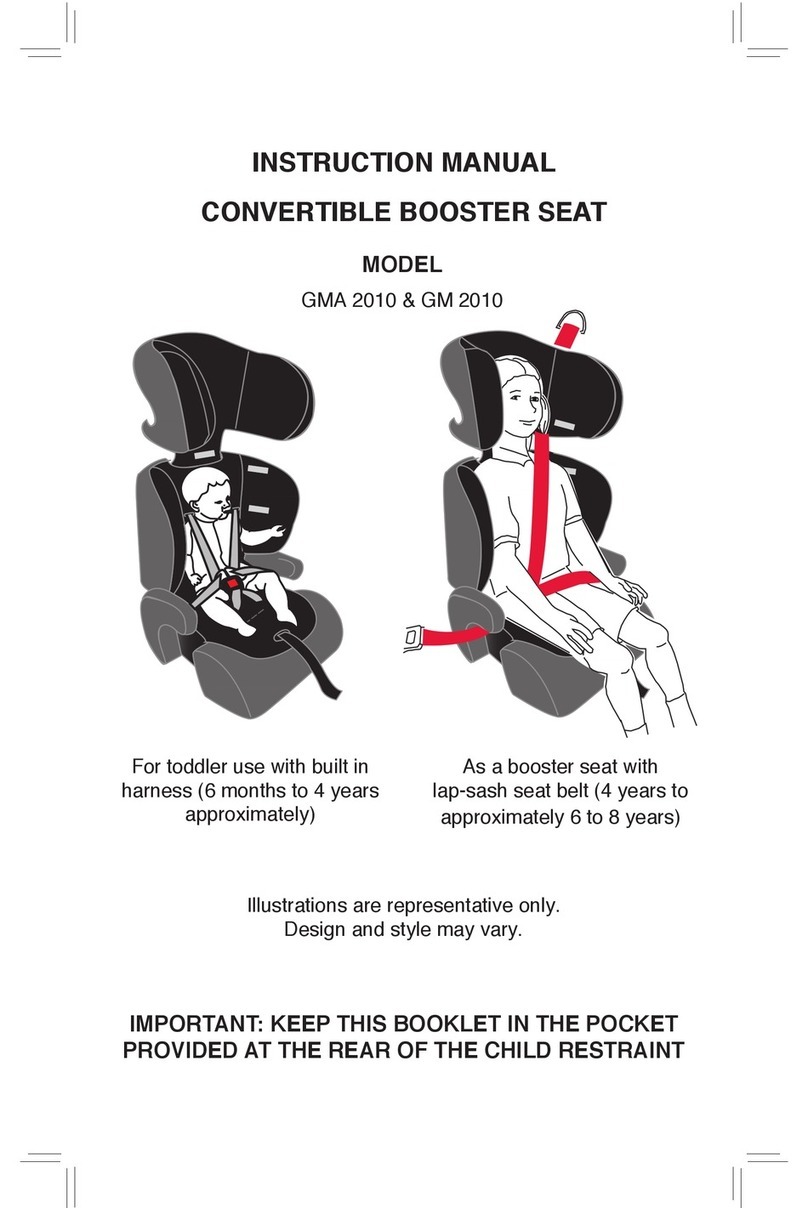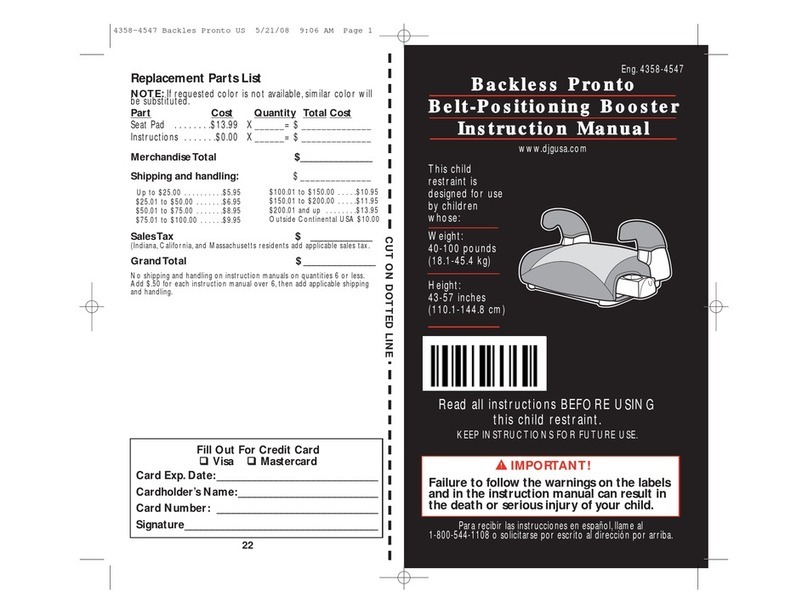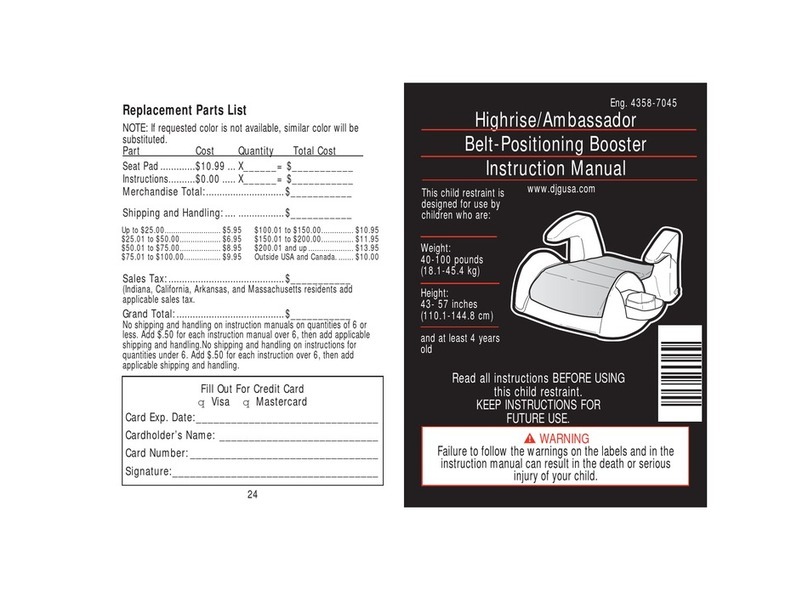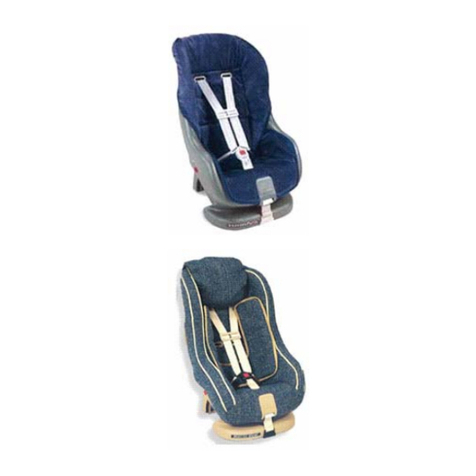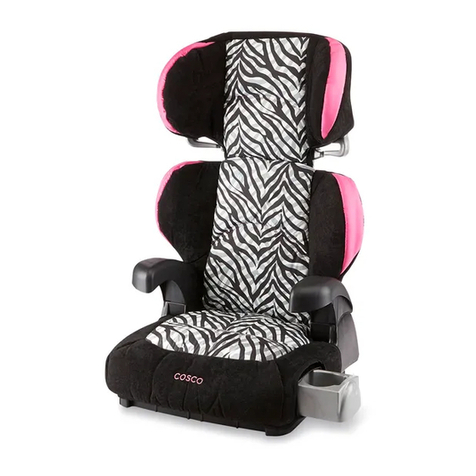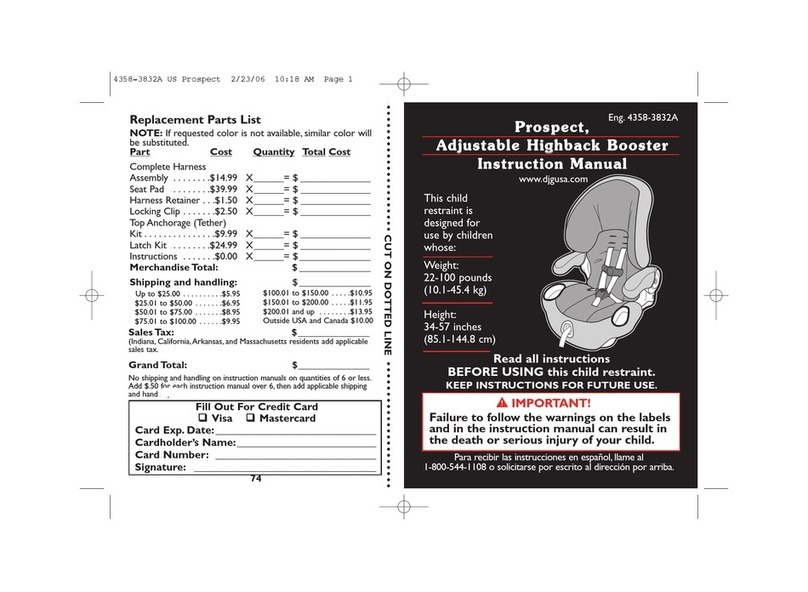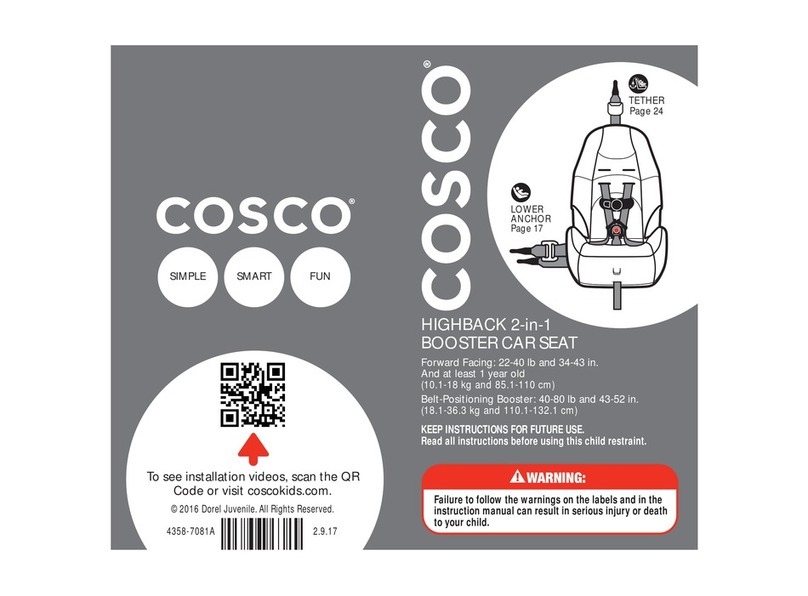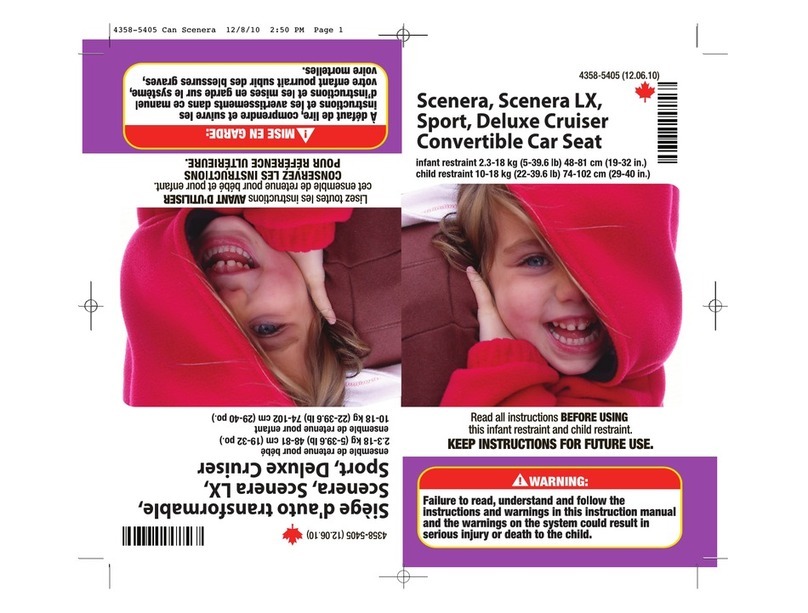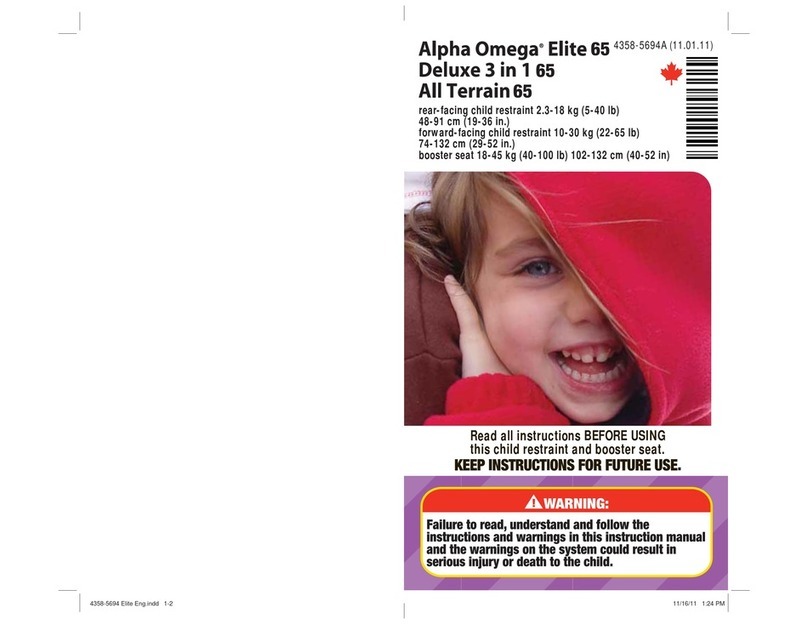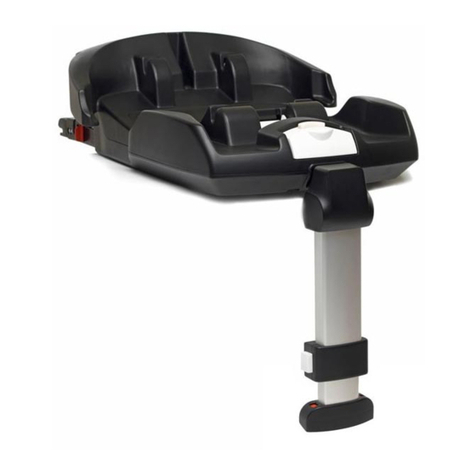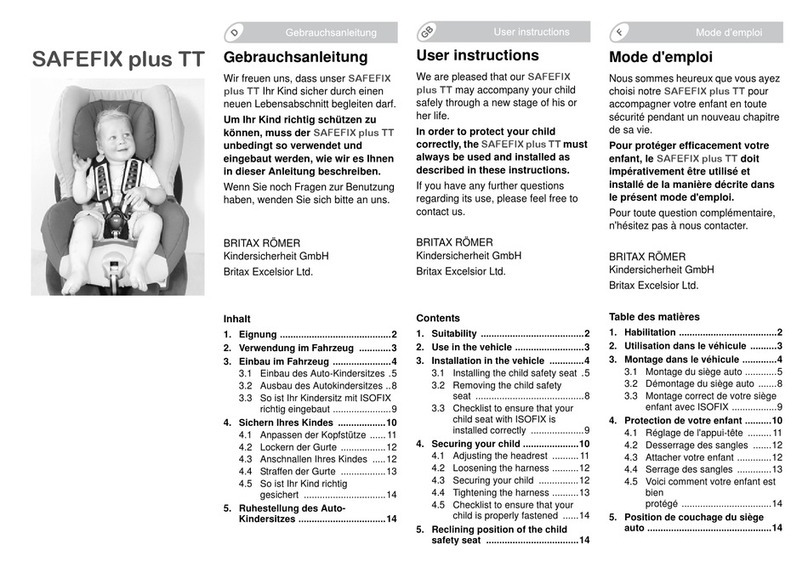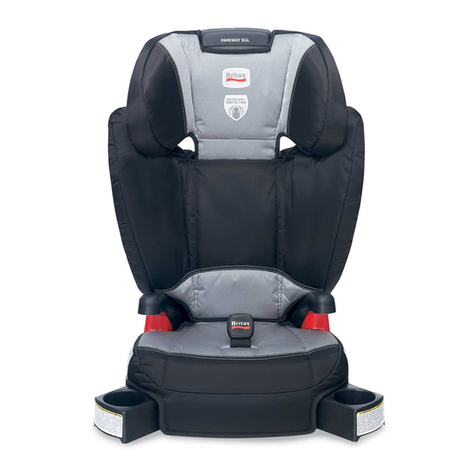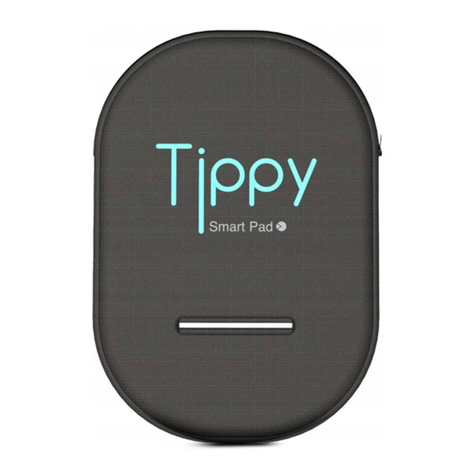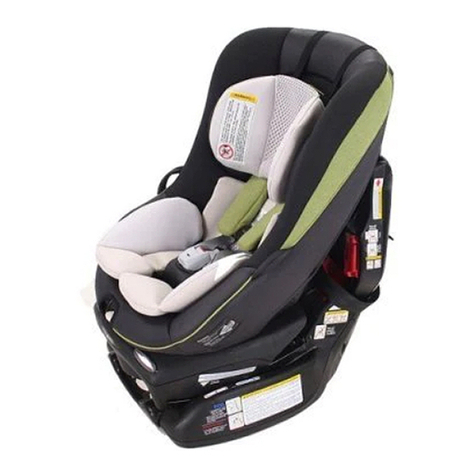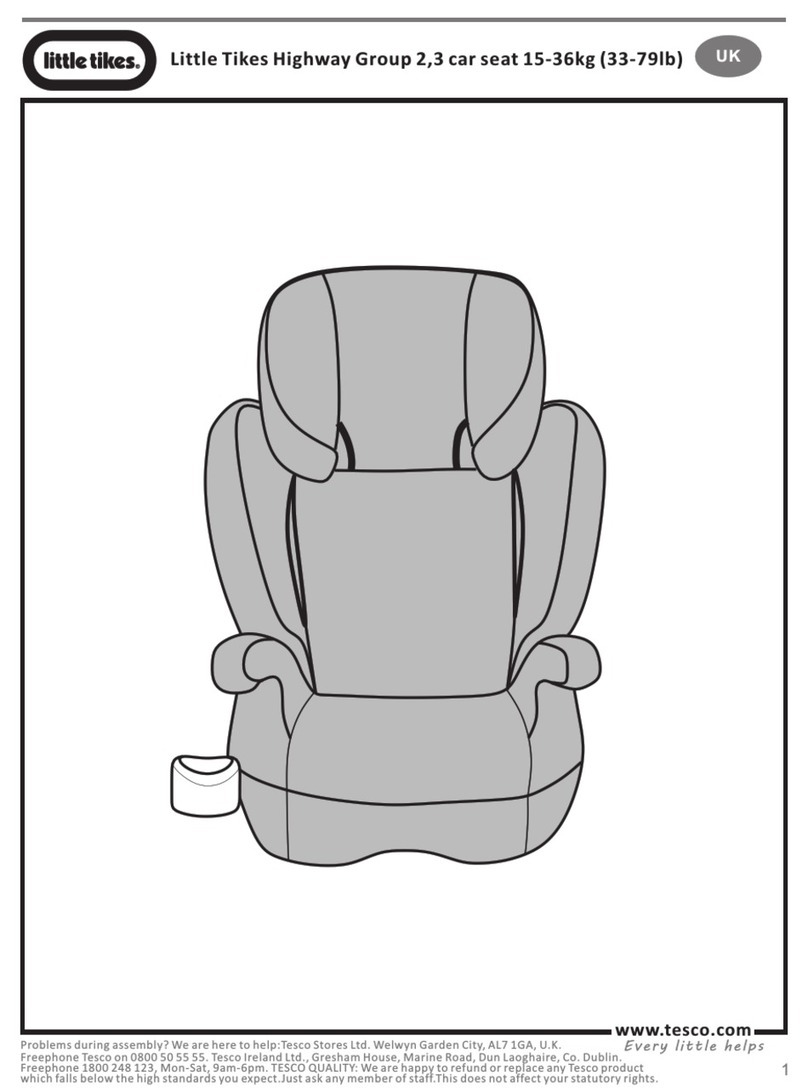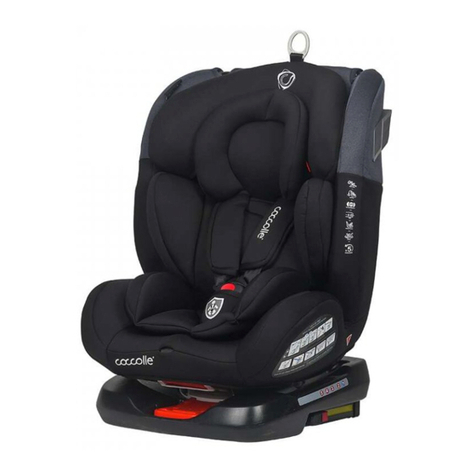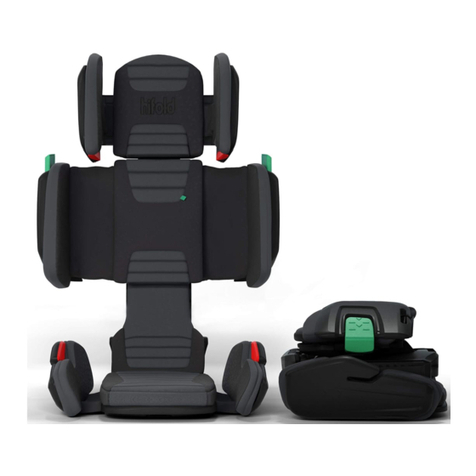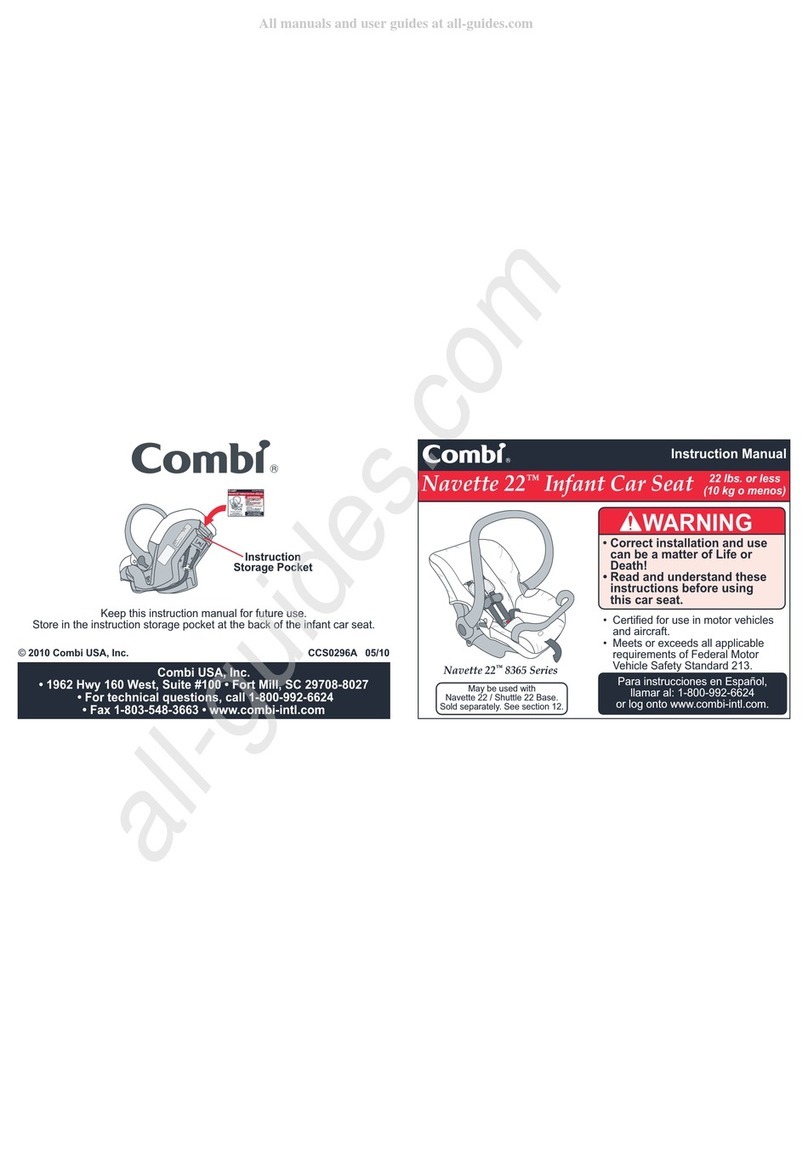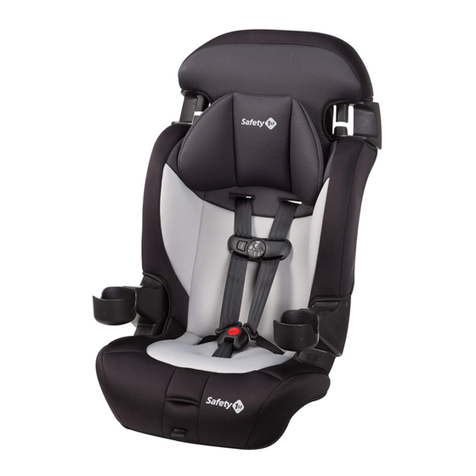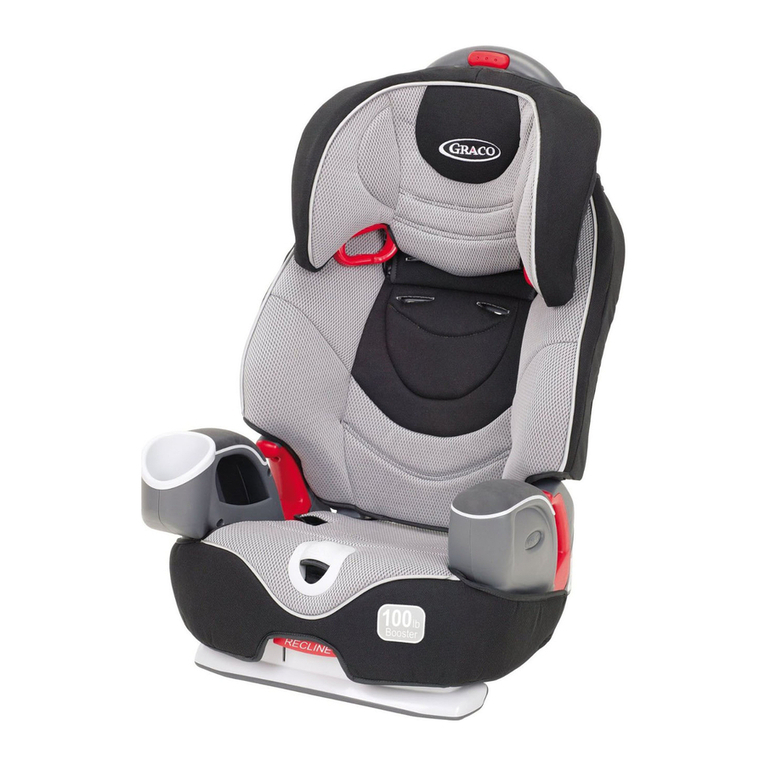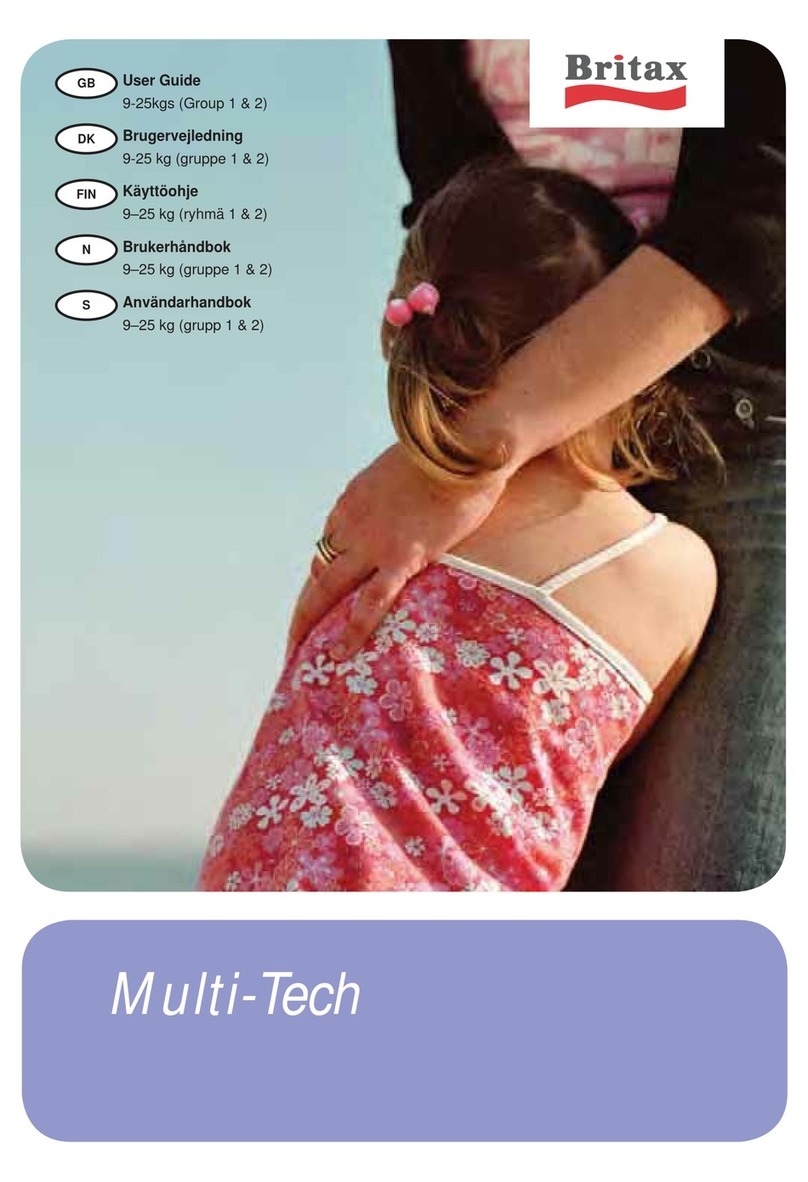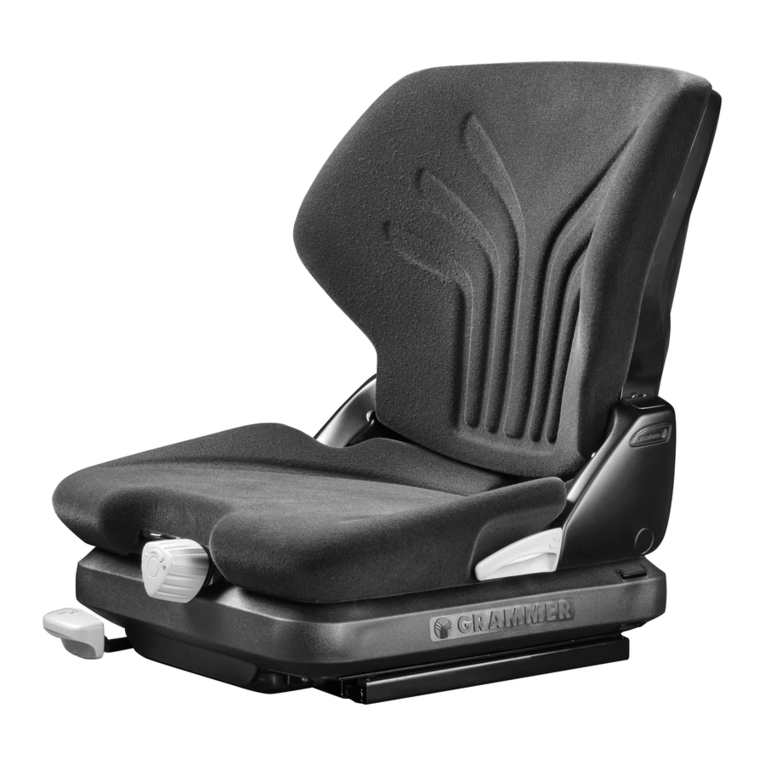
3
Thank you for choosing this car seat, referred to throughout
this manual as a child restraint. The DJG family is
committed to creating a child restraint with the most
comfort and convenience available today.
Remember, parents are a child’s first teachers and
examples. If you always buckle your seat belt, your child
will think it is the natural thing to do. Make it a firm rule
that the vehicle does not go until everyone is buckled up.
Make no exceptions.
No one can predict if use of a child restraint will prevent
injury or death in a particular crash. However, combined
with careful driving, proper use of a child restraint can
lower a child’s risk of injury or death in most crashes.
Your child’s safety is worth the time it will take to read and
follow these instructions. After reading, if you still have
questions or have any concerns with this child restraint,
please contact our Consumer Relations Department at:
Dorel Juvenile Group, Inc.
Website: www.djgusa.com
Fax: 1-800-207-8182
Mailing Address: Dorel Juvenile Group, Inc.
P.O. Box 2609
Columbus, IN 47202-2609
Telephone: 1-800-544-1108
8 A.M. to 6 P.M. EST M-TH
8 A.M. to 4:30 P.M. EST FRI
A-1 ThankYou...
Please complete the postage-paid registration card that
came with your child restraint, and send it to us. Child
restraints could be recalled for safety reasons. You must
register this restraint to be reached in a recall. Send
your name, address, email address if available, and the
restraint’s model number and manufacturing date to:
Dorel Juvenile Group, Inc.
PO Box 2609, Columbus, IN 47202-2609
Attn: Consumer Relations
or call 1-800-544-1108 or register online at www.djgusa.
com/registration/carseat/us.
For recall information, call the U.S. Government’s Vehicle
Safety Hotline at 1–888–327–4236
(TTY: 1–800–424–9153), or go to http://www.NHTSA.gov
If you don’t have the card or if your
address changes, you will find the
model number and manufacture date
on the label located on side of shell.
A-2 RegistrationandSafetyNotices
A. Before You Begin
Model
Number
Manufacture
Date
4
Para recibir las instrucciones en español, llame al
1-800-544-1108 o solicitarse por escrito al dirección por arriba.
Example of model number and manufacture date.

